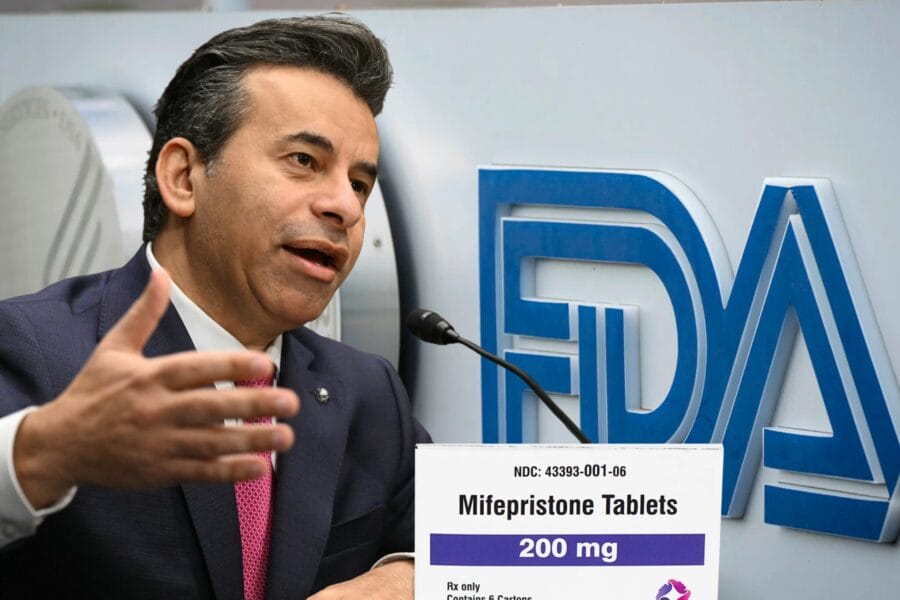Yesterday, a state trial court judge overturned an Oklahoma law intended to ensure the safe use of abortion-inducing drugs, such as RU-486. The law, enacted in 2011 and based upon an AUL model, simply required that abortion providers administer the drugs in the manner approved by the FDA.
The state’s interest in enacting such a law was clear: Since RU-486 was approved in 2000, thousands of women have faced complications, many life-threatening. Both the FDA and the drug manufacturer have acknowledged the substantial risk of complications following use. Fourteen women have died. Eight of those women died of a severe bacterial infection that would not otherwise harm healthy women. All eight of those women were instructed to use the drugs in a manner that directly contravened the approved FDA protocol.
On the other hand, no women have died from bacterial infection after using RU-486 in the manner approved by the FDA.
With that in mind, Oklahoma adopted a law aimed at ensuring that RU-486 and other abortion-inducing drugs are administered only in the way approved by the FDA. Rather than allowing providers to hand out dangerous drugs and send women home to self-administer away from physician oversight and beyond the gestational limit approved by the FDA, the law required that physicians examine women before administering the drugs and instructed that the drugs be administered in a clinical setting within the gestational limit approved by the FDA.
Of course, the law was immediately challenged by abortion providers (backed by the Center for Reproductive Rights), whose main interest is not protecting women’s health but making a profit. After all, sending women home with the drugs and providing them past the gestational limit allows abortion providers to sell more of the dangerous drugs each day.
During the course of litigation, the state of Oklahoma offered substantial evidence, demonstrating to the court that the misuse of abortion drugs is dangerous:
- The state established that the FDA approved the RU-486 drug regimen under a special code section (known as “Subpart H”) which allows the FDA to restrict the use of the drugs. The FDA had serious concerns about the safety of RU-486, and wanted to ensure the safest use possible.
- The state established that thousands of women have faced complications following use of RU-486, including the 14 deaths.
- The state established that eight women have died from bacterial infections following the improper use of RU-486, and that no women have died from bacterial infection following FDA-approved use of the drug regimen.
- The state established that FDA documents cite the incorrect use of RU-486 as “unapproved.”
- The state established that surgical abortion is safer than drug-induced abortion.
- The state established that the law imposes no “undue burden” on women, because it is a commonsense regulation protecting women from harm. The law does not ban abortion; it simply regulates the use of a drug proven to have dangerous—and deadly—consequences.
- And at the very least, the state established that the evidence provided by the plaintiff-abortion providers merely indicated that medical sources might differ on the dangers inherent in misuse of RU-486, and that in such a circumstance the Supreme Court has, under Gonzales v. Carhart, given state and federal legislatures “wide discretion” to regulate abortion for the safety of women.
But the trial court ignored it all. Not once in the court’s decision does it mention the fact that women have died following use of RU-486. Not once does the court cite FDA documents or scientific studies. Instead, the court concludes, incorrectly and without any documentation, that off-label use of RU-486 has been “demonstrated by scientific research to be safer and more effective” than the FDA-approved protocol.
The judge has, therefore, decided he knows better than the FDA.
He has also decided he knows better than the Supreme Court. He misinterprets Planned Parenthood v. Casey and ignores the fact that the Supreme Court has clearly proclaimed that states have an interest in the outset of pregnancy in protecting maternal health, and that regulations aimed at such impose no constitutional violations.
Moreover, he has decided he knows better than any other state court in Oklahoma, creating for the first time a “right” to abortion under the state constitution.
But that is really what this challenge is all about. It is about promoting abortion-on-demand, without limits. It is about creating abortion “rights” which really benefit abortion providers and their profit margins. It is not about protecting women’s health.




